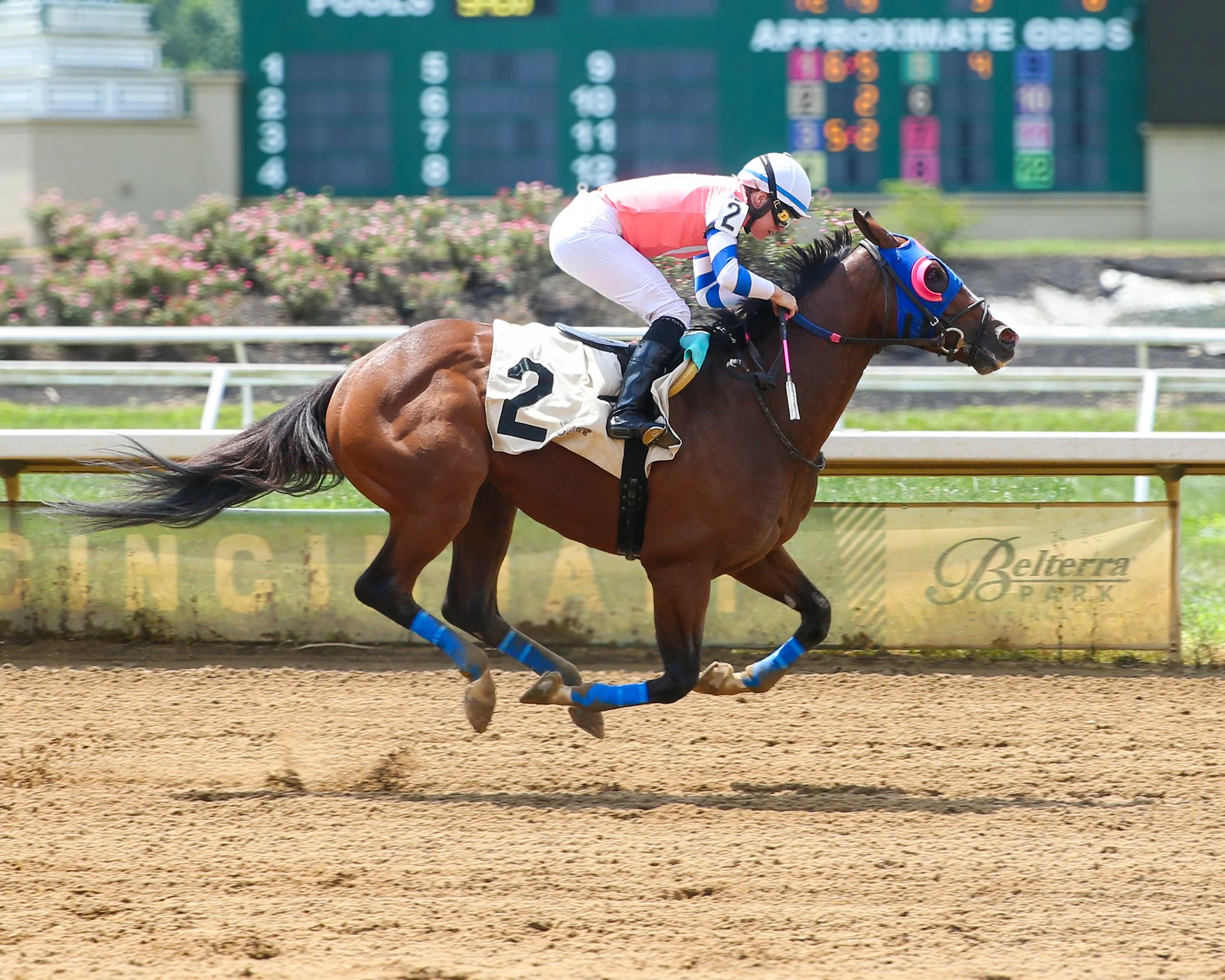The Business of Training Racehorses
Photo Credit: Coady Media/Devin Hall - Coulardot Racing’s Romatic Lead trained by Karyn Wittek
By: Cady Coulardot
Running a racing stable is more than just early mornings and fast horses; it’s a full-scale business operation. Behind every race day win is a complex system of financial planning, regulatory compliance, strategic decision-making, and team management. Today’s successful trainers aren’t just horsemen, they’re also entrepreneurs, employers, and leaders. To run a thriving racing stable, you need both resilience and hustle. That means mastering:
Financial management and budgeting
Licensing and hiring employees
Immigration visa compliance for international staff
Employee housing logistics and staff scheduling
Workers’ compensation coverage and risk management
Clear, consistent communication with owners and team members
Race placement strategy and long-term planning
Marketing and client relations to attract and retain owners
A trainer’s responsibilities extend far beyond the shedrow. While horsemanship is at the core of any successful operation, the business side of racing plays a critical role in long-term success. A modern trainer must oversee every element of the operation—from the well-being of the horses and the development of their team, to managing budgets, navigating industry regulations, and maintaining strong relationships with clients.
Today, many top stables operate across multiple states, with horses stabled and racing at different tracks throughout the year. This allows for more flexibility in placing horses where they have the best chances to succeed, increasing both purse earnings and exposure at top-tier racing events. Shipping logistics, condition book analysis, and race strategy all become part of the day-to-day decision-making process.
Volume is also a key part of some business models. Trainers may enter horses more frequently and across a variety of races to maximize race-day experience and earning opportunities. For many horses, racing is a valuable part of their development, helping them learn and improve in real-time competition settings.
Equally important is the development of people within the stable. Building a strong, well-trained team creates consistency and helps uphold the high standards of professionalism. The best racing operations prioritize mentorship, training, and pathways to upward mobility for their employees, providing career growth opportunities for assistant trainers, grooms, exercise riders, and other staff members.
Another growing element of stable management is client relations. In addition to managing horses, trainers are responsible for managing owner relationships. This includes regular updates, managing expectations, and occasionally working with syndicates or partnerships involving hundreds of people in on a single horse. As new ownership models such as microshares and syndication continue to expand, trainers must also adapt their communication and customer service strategies to meet the needs of a broader audience.
To be a successful trainer, it's crucial to understand budgeting and set clear financial goals. For example, while your employees may be paid weekly, many trainers bill their owners on a monthly basis. This gap can create cash flow challenges—especially if an owner falls behind on payments. You need to be financially prepared for delays and know how to manage your business and personal finances accordingly. In many cases, you’re essentially fronting the costs for essentials like feed, farrier work, and shipping, and getting reimbursed later. Planning ahead can make the difference between staying afloat and struggling.
In short, a trainer must wear many hats: horsemen, businessperson, strategist, and mentor. The most successful operations combine performance with professionalism, always keeping the horse at the center while building a sustainable and scalable business around them. To learn more about training and other careers in horse racing, visit our Learn page here!

